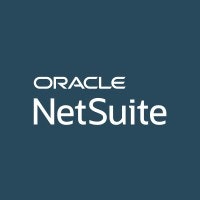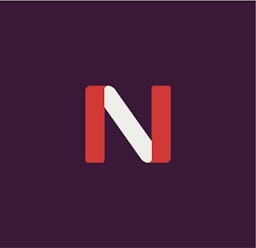Table of Contents
- What are the types of inventory management software?
- What are the common features of inventory management software?
- What are the benefits of inventory management software?
- How much does inventory management software cost?
- How to choose inventory management software
- Common questions to ask before choosing the best inventory management software
What are the types of inventory management software?
Periodic inventory management software: This software performs inventory valuation at weekly, monthly, quarterly, or annual intervals. It calculates the cost of goods sold (COGS) by adding new inventory purchases during the period to inventory at the beginning of a period and deducting inventory at the end of the period.
Perpetual inventory management software: This software performs inventory valuation on a continual basis, which means the inventory is updated automatically when a new item is purchased, received, returned, or sold. Perpetual inventory management software is typically suitable for large businesses that require an up-to-date view of the inventory level to streamline purchase orders.
Barcode inventory management software: Associated with perpetual inventory management, barcode inventory software scans and records each product being purchased, sold, or moved. There are two main types of barcode tools—Universal Product Code (UPC) and stock-keeping unit (SKU). This inventory management solution is suitable for large businesses and helps reduce manual errors.
Radio-frequency identification (RFID) software: This solution uses a wireless system comprising tags and readers. A reader reads data from a tag that consists of product-related information such as the batch number and production date. RFID inventory systems are suitable for businesses that run multiple warehouses with large amounts of stock.
What are the common features of inventory management software?
Inventory optimization: Balance and streamline inventory stock to meet customer service and revenue goals. With this feature, you can categorize inventory based on attributes such as item type, utility, and price range, add custom tags to products, and identify sales trends based on these tags.
Product identification: Link barcodes or serial numbers with specific items for identification and monitor inventory based on product attributes such as weight, height, lot, batch, date, and serial number.
Inventory auditing: Run periodic reviews, also known as cycle counts, of inventory records and alert management of any discrepancies or process lapses.
Forecasting: Estimate expenses, sales, and other variables based on past and present data/trends. It can reduce operational expenses and capital expenditure as well as help companies foresee issues based on data.
Purchase order management: Create, review, and modify paperless purchase orders from suppliers.
What are the benefits of inventory management software?
Eliminates inventory inaccuracy: Keeping a manual record of inventory levels increases the chances of data inaccuracy and duplication. Besides that, manual inventory management programs, whatever your method, are inefficient and time-consuming. These methods cannot handle complex tasks such as inventory auditing, inventory control, and real-time inventory tracking. Inventory management systems ensure inventory accuracy by automating data recording and stock-tracking processes, which leaves no room for manual data entry errors.
Increases manufacturing efficiency: Manufacturers need to automate their inventory management processes to meet customer demand and avoid overstocking goods effectively. With an inventory management system, they are able to identify trends in product sales and ultimately create a better experience for their customers.
Better inventory forecasting: Inventory management software maintains a database of historical and seasonal stock data. With this data in hand, inventory managers can understand seasonal market demand and forecast future sales to make necessary adjustments in stock levels.
Prevents stock-outs and excess inventory: Inaccurate forecasting or data in hand can lead to frequent stock-outs or overstocking. An inventory management system manages the orders and inventory across all of your sales channels simultaneously, helping you stay on top of your inventory and prevent excess or deficit stocks.
Improves financial and business performance: A deeper knowledge of both availability and demand results in increased inventory turnover, which results in higher profits. Inventory management solutions also save time that could be spent on other business processes, hence increasing productivity.
Enhances inventory traceability: Inventory management software allows managers to trace and locate specific stock. The software helps them get full traceability and find compromised items. In case there is a faulty item in the inventory, managers can track it down and ensure it is not included in final orders.
Offers data-driven insights: With detailed inventory data and records in hand, managers are empowered to make better decisions for their businesses. An inventory management system also facilitates automated reporting, equipping managers to make strategic choices.
How much does inventory management software cost?
Most products in the market are priced on a per-month basis and can be divided into three pricing tiers based on their starting price.
Price ranges:*
$20 - $40
$41 - $60
$60+
*The pricing included is for the entry-level/lowest-priced offering found on vendor websites on November 23, 2022. These ranges correspond to the 25th, 75th, and 100th percentiles of pricing information gathered from vendor websites of sample products.
The above list summarizes pricing for the base plans of most products. Moreover, based on the complexity of your asset tracking and physical inventory needs, you may require additional features to support multiple sales channels and multiple warehouse management. An enterprise or premium product that is priced higher may include additional features such as a mobile app, bill of materials, multi-site tracking, and work order management.
How to choose inventory management software
Identify gaps in your inventory operations: Most businesses require inventory management software to streamline inventory tracking operations, eliminate inaccurate inventory reports, and improve warehouse planning. Before starting your search for the best inventory management software system, identify the gaps in your inventory operations and look for a tool that aligns with your business requirements.
Evaluate the inventory barcoding feature: The solution you select should have barcode scanning functionality to help track the items in your inventory and resupply stores if you’re running out of a particular inventory item. When looking at options, check with vendors whether their software has this feature.
Consider automated stock management: An inventory management solution that sends automatic alerts when you're low on stock and lets you quickly generate a purchase order will not only improve your user experience but also streamline fulfillment management for your small business.
Assess reporting and analytics capabilities: Most inventory management software offers a real-time view of your inventory to facilitate order accuracy, monitor product scanning, and report discrepancies. However, there are a few tools that require manual report generation based on specific performance metrics. Consider investing in a solution that automates reporting and analytics to save time from manual data entry.
Evaluate integration with accounting software: Inventory management systems work closely with accounting platforms. Inventory control and inventory auditing are important functions fueled by accounting solution integration. When buying inventory software, ask the vendor about third-party integrations and look for a solution that integrates with your preferred accounting software.
Check the total cost of ownership: Different inventory management programs offer varied pricing models, which makes their direct comparison a bit tough. Certain vendors may charge for product support, data storage, training, implementation, upgrades, and more. Before purchasing a solution, contact the vendor and calculate the total cost of ownership based on your business needs.
Common questions to ask before choosing the best inventory management software
Is your inventory system mobile compatible? Consider investing in a tool compatible with mobile devices to help you stay on top of your inventory, create purchase/sales orders, view shipment status in real time, and organize workflows from anywhere, at any time.
How well will the solution integrate with my existing tech stack? You will most likely use barcoding technologies and purchase order modules to export/import data. Without integration, you’ll need to export data from other software and upload it to your inventory management tool. This is not only tedious but also limits your ability to keep all systems up to date.
Does your software support multi-channel inventory management? If you sell through more than one channel, you will need a system that supports multiple sales channel management.
Does it support managing multiple warehouses? If your business has more than one warehouse, your inventory system should offer visibility into each one. Before you pick a tool, ask the vendor if it works with different warehouse models and sizes.
Does it offer supplier management? With supplier management, you can manage various aspects of your supplier relationships, such as auto-filling purchase orders, storing supplier details, tracking transaction histories, and supplier discounts. Ask the vendor if their tool offers any such capabilities.
Is there a reorder management feature? This feature allows you to calculate critical stock levels and reorder points based on historical trends. It sends alerts when your stock dips below a reorder point.
Sources
Products evaluated for the pricing calculation were taken from Capterra’s inventory management software directory and sorted by the number of reviews. The pricing ranges exclude freemium versions of the products. The features highlighted were identified based on their relevance and the percentage of products in Capterra’s directory that offer them.

























